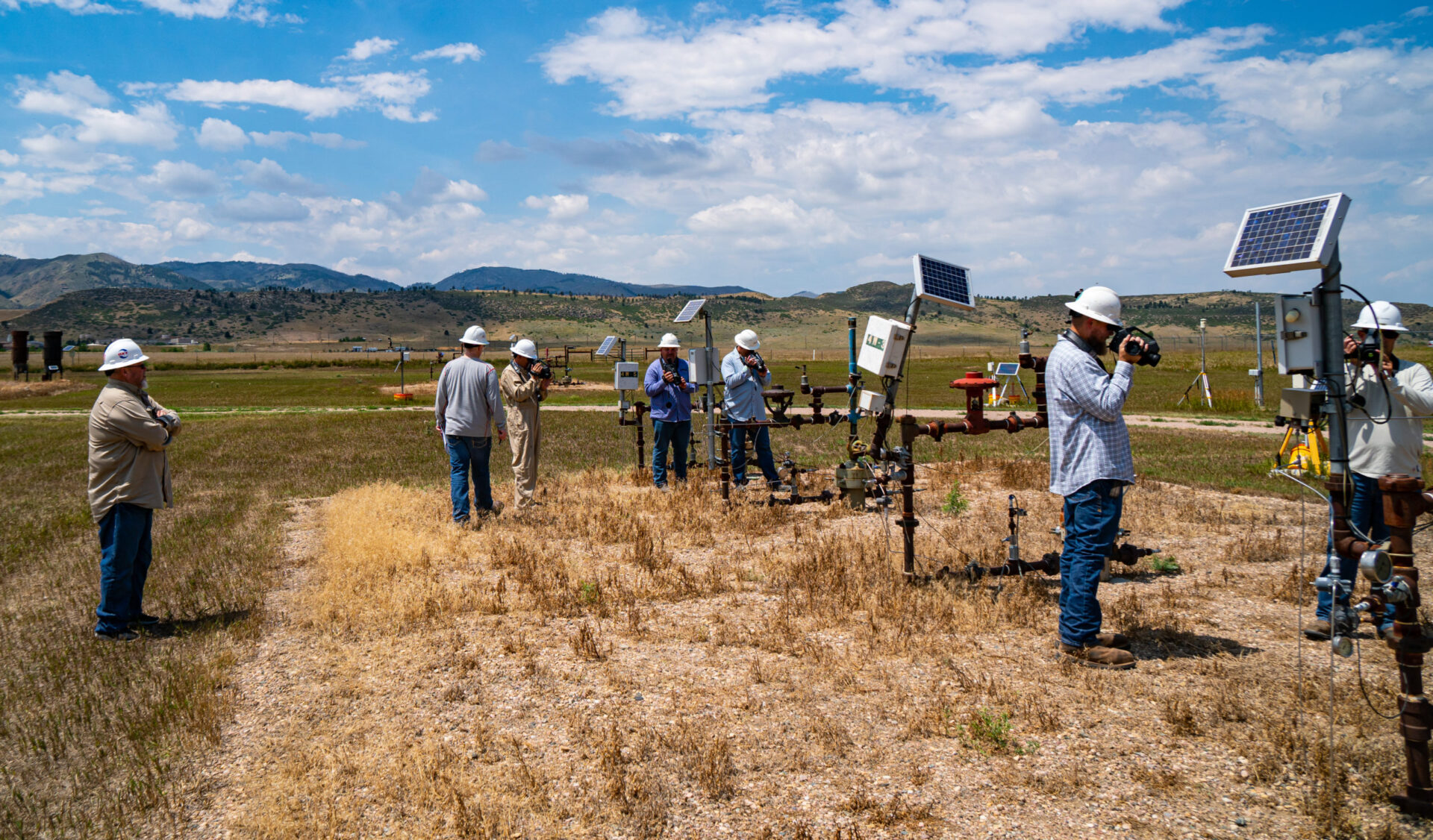OGI Efficacy


Project Overview:
While optical gas imaging (OGI) has been frequently used to screen for leaks in oil and gas (O&G) operations, the method has not been rigorously tested, under controlled conditions, using experience operators.
METEC worked with the EPA and Jacobs to design a study to evaluate the baseline efficacy of OGI as used in most leak detection and repair (LDAR) programs. Personnel from 13 O&G operators, 3 contract survey companies, and 8 regulatory groups contributed to the study. Participants completed 30 days of testing, including over 1400 test points and 70 non-emitting control tests.
Results are documented in: https://doi.org/10.1021/acs.est.0c01285
Funding: EPA provided the majority of the funding for this work and The Environmental Partnership, a program with API, contributed the remainder of the funding.
Key results:
Experience-driven differences are a statistically significant driver of detection rate. When LDAR surveyors (those from O&G operators or their contractors) are divided between those with low (12-200 surveys) and high (>700 surveys) experience, the more experienced surveyors detect 1.6 times as many leaks. Compliance surveyors – those that work for regulatory agencies – generally have lower experience (<550 surveys each, in this study), and, due to protocol differences relative to LDAR surveyors, have detection rates similar to low-experience LDAR surveyors.



Results differ from prior studies that focused primarily on camera performance. Detection rates are an order-of-magnitude lower than a prior study, also conducted at METEC. For a 90% probability of detection, observing leaks at ≈2.7 m, Ravikumar et al.* estimated 0.7 scfh or 13 g/h CH4 emission rate. In contrast, this study found the most experienced surveyors achieved 90% probability of detection at 7 [5.62 to 19.5] scfh (3.29 [2.64 to 9.16] slpm) … an emission rate 10x the prior study. Low-experienced LDAR surveyors did not achieve 90% PoD during the study, despite emission rates in excess of 20 scfh for some tests.
The study uncovered some clues as to why experienced surveyors do a better job. First, they intuitively know when to slow down. They tend to spend more time on each major equipment unit, and they survey few units in less than 2 minutes.

Additionally, fast survey times impact surveyors with less experience more. When spending less than 2 minutes surveying one unit of major equipment, surveyors with low-experience (and compliance surveyors) see a statistically significant drop in detection performance relative to spending more than 2 minutes.

Where you are looking matters. Detecting emissions while at the ground is more difficult than looking for leaks against an equipment background or viewing leak locations against the sky. This type of impact is typical of IR imaging cameras, which are highly dependent on background characteristics. And, as with other factors, the impact of this factor decreases with experience – more experienced surveyors appear to intuitively frame components from multiple angles when viewing against the ground, somewhat mitigating the impact of the ground background.

*Ravikumar, A. P.; Wang, J.; McGuire, M.; Bell, C. S.; Zimmerle, D.; Brandt, A. R. Good versus Good Enough? Empirical Tests of Methane Leak Detection Sensitivity of a Commercial Infrared Camera. Environmental Science & Technology 2018, 52, 2368-2374. Flow rate for 90% detection rate: , where 𝑑 is the observation distance in meters, and 𝑟 is the flowrate of gas in g/h
Zimmerle D, Vaughn T, Bell CS, Bennett K, Deshmukh P, Thoma E (2020) Detection Limits of Optical Gas Imaging for Natural Gas Leak Detection in Realistic Controlled Conditions. Environmental Science & Technology, https://doi.org/10.1021/acs.est.0c01285
Funding Provided by:
Environmental Protection Agency (EPA)
The Environmental Partnership (EP)
